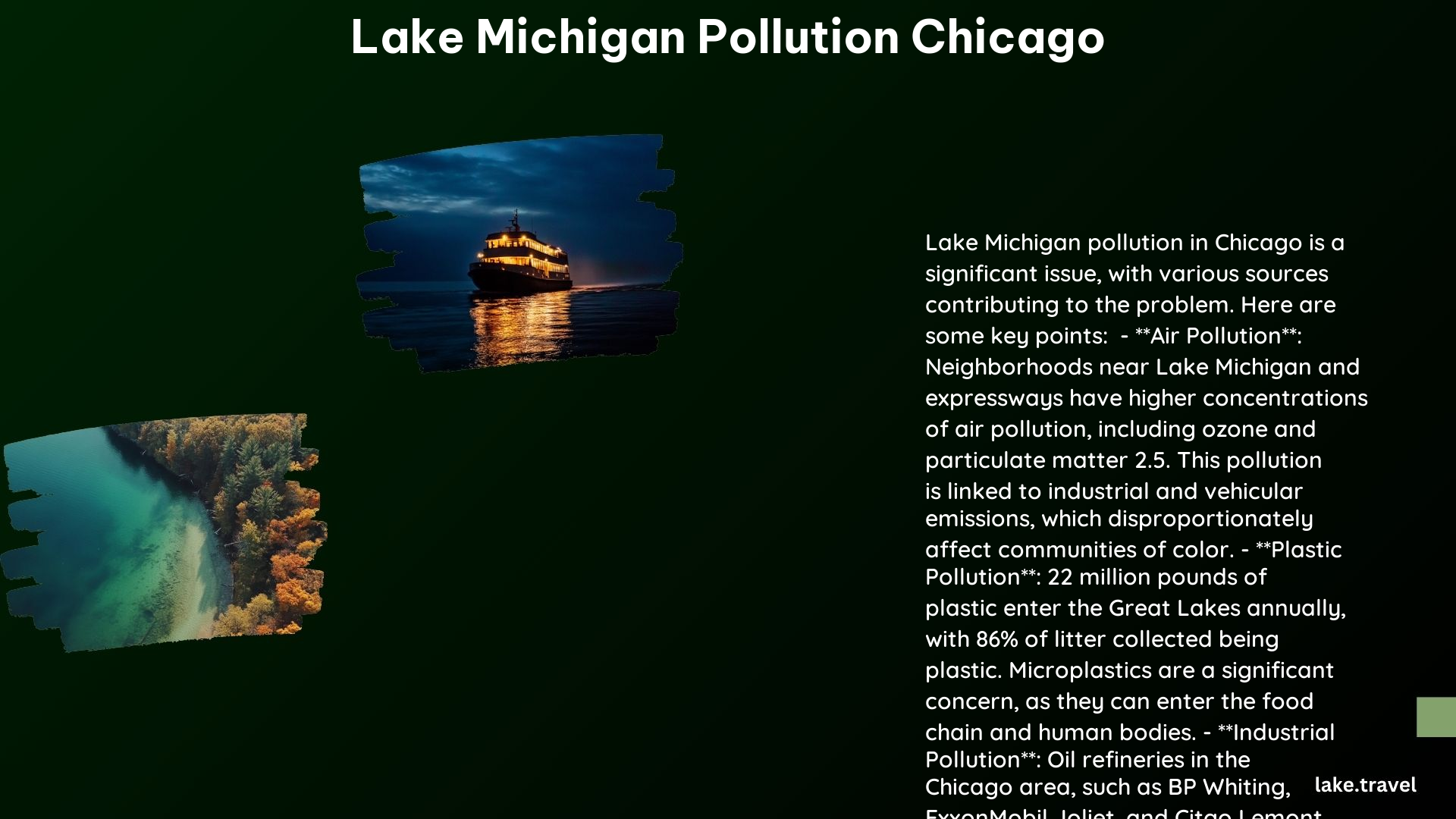Lake Michigan, which provides drinking water for 40 million people, faces significant pollution issues, particularly in the Chicago area. From plastic waste to industrial runoff, the lake’s ecosystem is under threat, and addressing these challenges is crucial for the health and well-being of the surrounding communities.
Plastic Pollution in Lake Michigan

One of the primary concerns regarding Lake Michigan pollution in Chicago is the issue of plastic waste. It is estimated that 22 million pounds of plastic pollution enter the Great Lakes every year, with Lake Michigan being the most polluted. This plastic waste includes “tiny trash” like plastic, foam, and glass pieces measuring less than 2.5 centimeters, which can break down into microplastics and enter the food chain, posing a threat to aquatic life and potentially human health.
Air Pollution and Its Impact on Lake Michigan

In addition to plastic pollution, air pollution is another significant concern affecting Lake Michigan in the Chicago area. Neighborhoods near Chicago expressways and Lake Michigan have higher concentrations of air pollution, including ozone, particulate matter 2.5, and nitrogen dioxide. These pollutants are linked to industrial and vehicular emissions and can cause health issues like asthma, respiratory infections, and premature death.
Fertilizer Runoff and Harmful Algal Blooms
Fertilizer runoff from farming is another major contributor to Lake Michigan pollution in Chicago. This runoff can lead to harmful algal blooms, making freshwater undrinkable. For example, Green Bay in Lake Michigan suffers from a large dead zone caused by fertilizer runoff every year.
Industrial Pollution and Its Toll on Lake Michigan
The Chicago area is home to several oil refineries, such as BP Whiting, ExxonMobil Joliet, and Citgo in Lemont, which dump massive amounts of toxic chemicals and heavy metals into Lake Michigan and other waterways. These pollutants include chlorides, sulfates, selenium, and nitrogen, which can harm aquatic life and contribute to water-fouling algae blooms and dead zones.
Initiatives to Reduce Pollution in Lake Michigan
In response to these pressing issues, various initiatives have been implemented to address the pollution challenges facing Lake Michigan in the Chicago area.
Adopt-a-Beach Program
The Alliance for the Great Lakes runs a volunteer program called Adopt-a-Beach, where tens of thousands of people clean up plastics and other waste from the shorelines. This community-driven effort helps to mitigate the impact of plastic pollution on the lake.
Government Regulations
The City of Chicago has implemented a 7-cent bag tax to discourage the use of plastic bags and reduce plastic waste. Additionally, there are ongoing efforts to strengthen regulations and enforcement to limit industrial pollution from refineries and other sources.
Corporate Initiatives
Some companies, such as McDonald’s and Mondelez, have launched plans to reduce plastic packaging and increase recycling, contributing to the overall effort to address the plastic pollution crisis in Lake Michigan.
These initiatives, combined with continued research, public awareness, and collaborative efforts, aim to mitigate the impact of pollution on Lake Michigan and ensure a cleaner and healthier environment for the communities that rely on this vital natural resource.
Reference:
– Plastic Pollution in the Great Lakes
– Air Pollution in Chicago
– Harmful Algal Blooms in Lake Michigan
– Industrial Pollution in Lake Michigan
